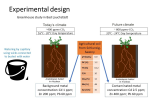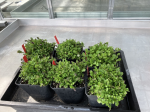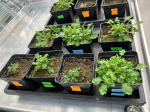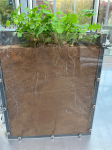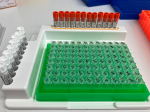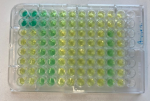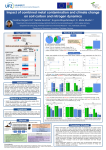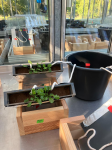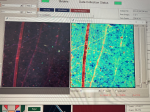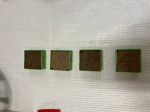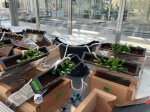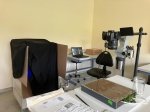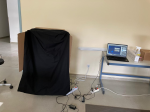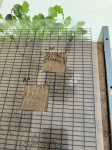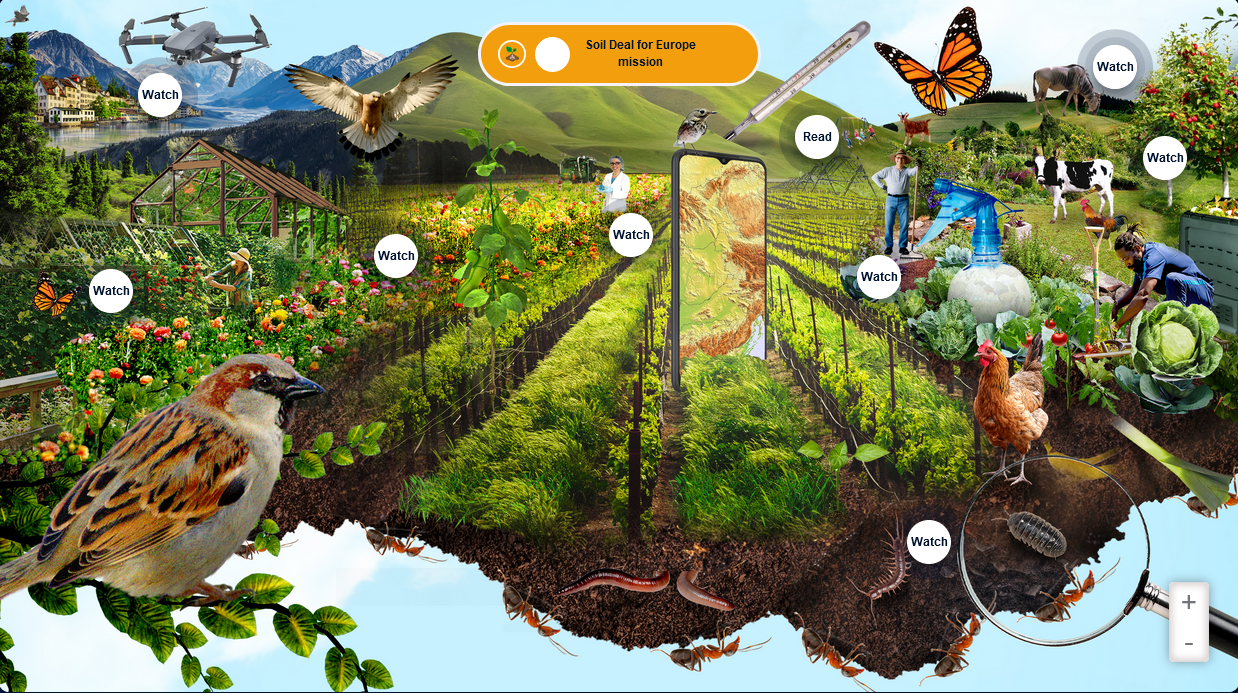Dr. Carolina Vergara Cid
Contact
Dr. Carolina Vergara Cid
MSCA fellow
Postdoc researcher
carolina.vergara-cid@ufz.de / Phone +49 341 6025-1377
Working Team Plant Biogeochemistry
Research project: NUTCLIME. Funded by the MSCA, European Commission
WITHOUT HEALTHY SOILS, LIFE CANNOT THRIVE…

• Soil is one of our planet’s most vital natural resources, playing a crucial role in sustaining life through its diverse ecosystem functions.
• Nearly 90% of the food we consume relies on soil, highlighting the critical importance of soil quality for global food security.
• Healthy soils provide us clean water, help to prevent floods and droughts, sustain wildlife, and recycle nutrients on earth.
• The health and productivity of soils are largely driven by microbial processes, which are essential for both ecosystem balance and crop yields.
Therefore, my research mission is to advance the understanding of soil-plant-microbe interactions to restore degraded soils and contribute towards ecosystem sustainability and biodiversity. To this end, I'm working on a research project, NUTCLIME, funded by the European Commission (MSCA).

About the project
Unfortunately, 60-70% of EU soils are already unhealthy, with heavy metal contamination being a significant factor. Over 29,000 sites in Europe are reported as contaminated with metals/metalloids. While natural weathering contributes to metal presence, human activities such as mining, irrigation, and the use of fertilizers and pesticides are the primary sources. Excessive heavy metals disrupt soil health, harming crop production and food safety. However, certain plants, known as metal hyperaccumulators, can uptake and store these metals at levels that otherwise are toxic to other plants. Therefore, metal hyperaccumulator plants can be employed as a promising soil remediation tool, the so-called phytoremediation.
Despite extensive research on metal contamination over the past decade, critical knowledge gaps remain, particularly in understanding how metals impact nutrient cycling processes. Even less understood is how metal contamination, combined with the pressures of climate change, affects the performance of phytoremediation and the resulting shifts in nutrient dynamics. This intersection between metal pollution and climate factors could be key to developing more effective strategies for soil restoration and sustainable agriculture.
The overarching goal of NUTCLIME is to unravel the interplay between nutrient dynamics and soil microorganisms in the rhizosphere of metal-hyperaccumulating plants under current and future climate conditions. The project's outcomes are expected to provide valuable insights into how nutrient fluxes are primarily affected and are limiting plant growth and metal accumulation, ultimately improving phytoremediation and phytomining.
This project is financed by the European Commission, Marie Skłodowska-Curie Actions.
The NUTCLIME project aims to unravel the complex interactions between nutrient dynamics and soil microorganisms in the rhizosphere of metal-hyperaccumulating plants. By understanding these processes, the project seeks to enhance metal extraction from soils under current and future climatic conditions, opening the way for more effective soil remediation strategies. This will be accomplished by:
1) Studying a model plant for metal-hyperaccumulation, Arabidopsis halleri.
2) Setting up controlled experiments in greenhouses for today and future climatic conditions.
3) Combining advanced analytical tools such as isotope pool dilution assays with transcriptomics to assess how metal contamination and climate change affect key process rates in nutrient cycling and its linkage with the active microbial community composition in the rhizosphere.
4) Implementing high-end spatial resolution techniques such as zymography and µ-XRF elemental mapping, with localized soil sampling and gene amplicon sequencing analysis to elucidate the spatial interplay of roots and soil microorganisms regarding the availability of metals and nutrients.

We work in climate-controlled greenhouses at the UFZ research station Bad Lauchstädt under two scenarios: ambient temperature and CO2 vs. the International Panel on Climate Change (IPCC) RCP 8.5 climate scenario (+4°C and doubled atmospheric CO2 compared to ambient) at 10-hour day-night cycles, watered regularly to a 55% of the water holding capacity. The IPCC RCP 8.5 scenario was declared the worst-case scenario postulated for climate change by 2100 if we continue with "business as usual" and fail to implement significant climate policies.
The experiments are carried out using pots (2.5 kg soil capacity) and rhizoboxes (30 cm × 20 cm × 3.5 cm, 3 kg soil capacity), with 5 replicates per treatment. One off-shoot A. halleri clone is planted in each pot or rhizobox. We work with soils with different levels of heavy metals (Cd, Pb, Zn) to evaluate the interaction of metal contamination and climate change.
Metals are part of the earth’s crust and are found in all soils, but sometimes harmful metals can build up in large amounts, especially near polluted areas. This can affect plants, animals, and human health. Certain metals are essential for plant and animal health, like iron (Fe) and zinc (Zn). However, when some metals are present in large amounts, they can be toxic to plants, animals, and humans.
We measure metals in soils by collecting small soil samples and performing soil extractions with water or mild salts like 0.01 M CaCl2 to study the portion of metals that can be easily available for plants and soil biota. For this, we use inductively coupled plasma mass spectrometry (ICP-MS), which is an analytical technique that is used to measure elements at trace levels in biological fluids. In addition, we study the total concentration of metals in soils using small soil solid samples, and X-ray Fluorescence (XRF), which is an analytical technique that uses the interaction of X-rays with a material to determine its elemental composition. With this technique, it is also possible to map in 2D the metals in soils and study for example how the soil-plant interaction affects the metal distribution in the soils.
Finally, we also study other soil variables that are related to the availability of metals such as:
• Soil pH
• Organic matter in soil
• Soil texture
• Roots presence/absence
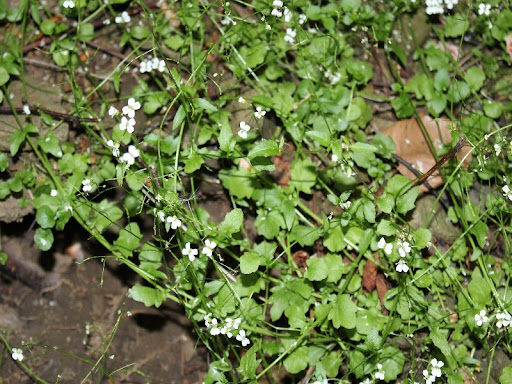
Arabidopsis halleri has a natural distribution in central and eastern Europe, and it can grow well in soils containing high concentrations of heavy metals. This plant has evolved mechanisms to tolerate and accumulate large amounts of heavy metals in its shoots and leaves, making it a good candidate for phytoremediation. Therefore, it has become a model plant as a metal hyperaccumulating species for Cd and Zn for scientific research and environmental applications.
Plants counter complex environmental stress conditions (abiotic and biotic) to minimize damage and ensure continued growth and reproduction. In this project, we study how the combination of two stressors, such as climate change and metal contamination, can affect phytoremediation efficiency. For this, we evaluate plant growth and metal accumulation in roots and shoots and relate them to the nutrient and metal availability and the soil microbial community composition.
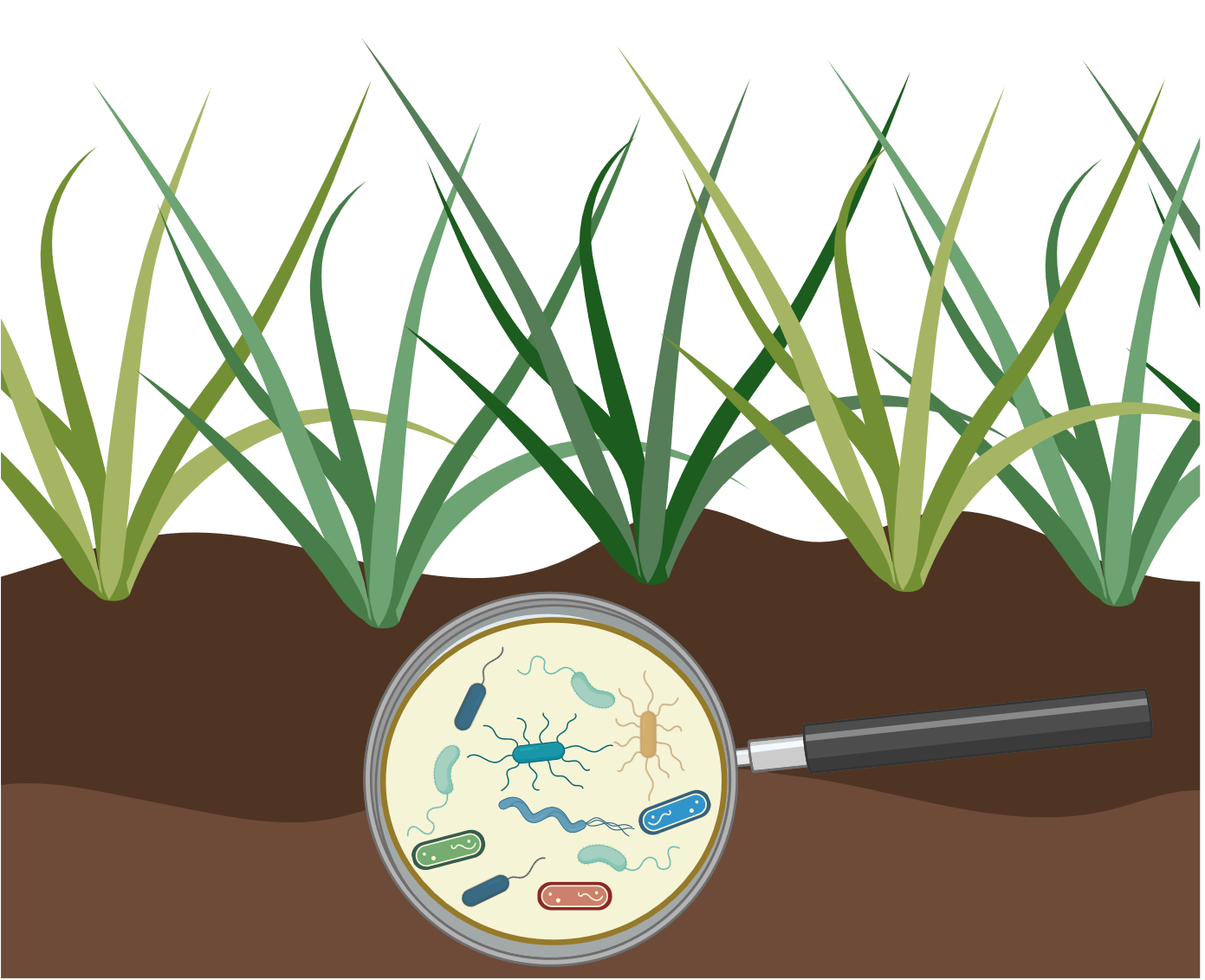
The soil microbial community is essential for sustaining soil processes since it acts as the engine of the soil. It is comprised by organisms like bacteria, fungi, and other microbes that are actively involved in breaking down organic matter, recycling nutrients, and improving soil structure. They can also help plants to absorb water and nutrients, and degrade certain pollutants. Therefore, soil microbes keep soil healthy and productive, making them essential for growing food and supporting ecosystems.
We want to study how the microbial community structure is affected by the stress caused by heavy metals and the climate change pressure, and how the interaction of the microbial community with a metal hyperaccumulating plant can control nutrient cycling in phytoremediation. Therefore, we focus our study on the analysis of bacterial/archaeal communities from soil and rhizosphere using 16S rRNA gene and transcript amplicon sequencing.

Soil nutrients play a critical role in maintaining soil health and supporting healthy ecosystems since they provide the building blocks for plants and microorganisms to grow. Proper nutrient levels prevent soil degradation and ensure long-term productivity for crops. Although all organisms require a large variety of nutrients in different quantities, 3 major bricks sustain life: carbon (C), nitrogen (N), and phosphorus (P). Carbon in soils exists primarily in the form of soil organic matter (SOM), which is critical for maintaining soil structure, water retention, and microbial activity that releases essential nutrients for plant growth. Nitrogen is essential for the growth of plants and microorganisms, as it is a key component of proteins and enzymes. Nitrogen undergoes complex transformations in the soil, including mineralization and nitrification, making it available to plants in forms like ammonium and nitrate. Phosphorus is crucial for plants and microorganisms because it plays a key role in energy transfer, DNA synthesis, and root development.
The cycling of these 3 nutrients is tightly coupled in soils. However, major disturbances can produce a decouple in their cycles and disrupt their balance. Therefore, in this project, we study how disturbances like metal contamination and climate change affect nutrient cycling. For this, we study the pools of organic and inorganic forms of C, N, and P in soils and hydrolytic enzyme activities that break down organic matter rich in C, N, and P. To study the inorganic forms of N and P we use colorimetric methods, and for the enzymes we use fluorescent dye-conjugated substrates, which do not fluoresce unless cleaved by respective enzymes. With the implementation of the zymography technique, we can map in 2D the distribution of enzyme activities in soils. Furthermore, we measure soil respiration and gross rates of N transformation processes like mineralization and nitrification using N isotope techniques. Finally, we link all these results to the composition of the microbial community and metal concentrations.

September 2024
We are preparing a session in the program SSS5 for EGU 2025!
Join our session: Metal(loid)s in Soil-Plant Systems
Session short summary:
To understand the behavior, fate and effects of essential and non-essential metal(loid)s in soil and plant, it is crucial to quantify their fluxes and to identify the biogeochemical processes that control their mobility. We welcome contributions from field, greenhouse or lab; empirical or modelled.

May 2024
Results presented at the IUSS (International Union of Soil Sciences) international conference
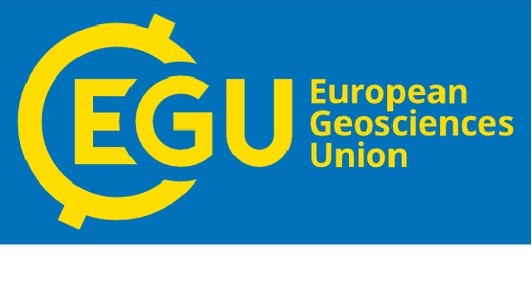
April 2024
Results presented at the EGU (European Geosciences Union) international conference

April 2024
A master's student joins NUTCLIME! Jessica Hamm will collaborate in disentangling nitrogen cycling processes in soils under metal contamination and climate change pressures. She will study nitrogen functional genes and nitrogen transformation processes.
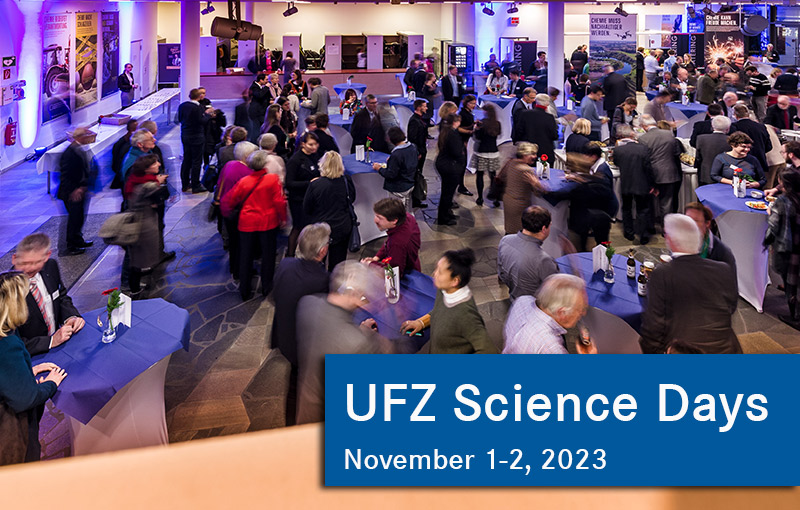
November 2023
We displayed an exposition with the research tools (rhizoboxes, planar optodes,etc) we used at the UFZ science day. The event goal was to:
- Make research at the UFZ visible and tangible for all interested employees
- Provide a stage for inspiring science
- Develop collaborations within the UFZ
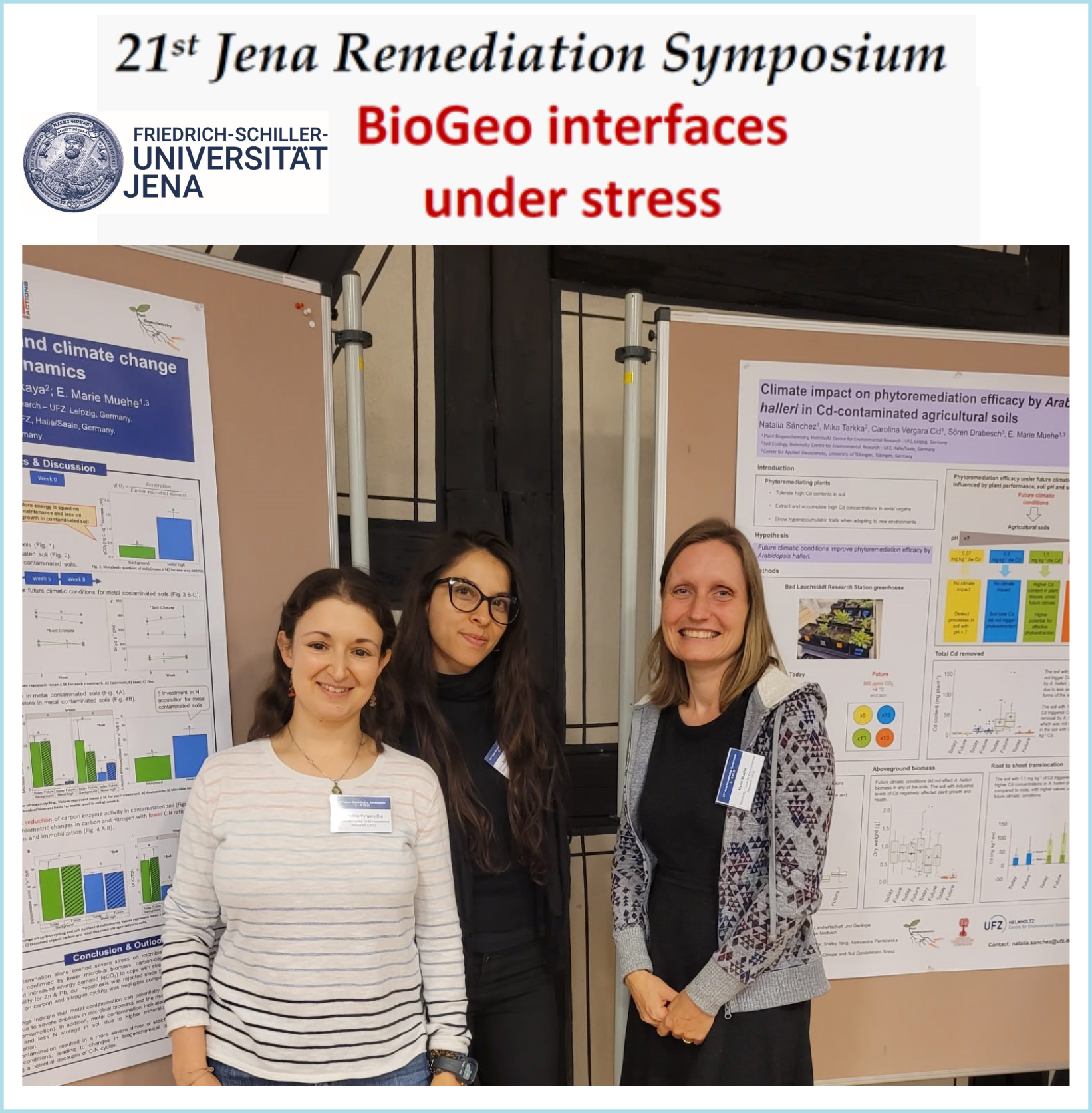
October 2023
Results presented at 21st Jena Remediation symposium
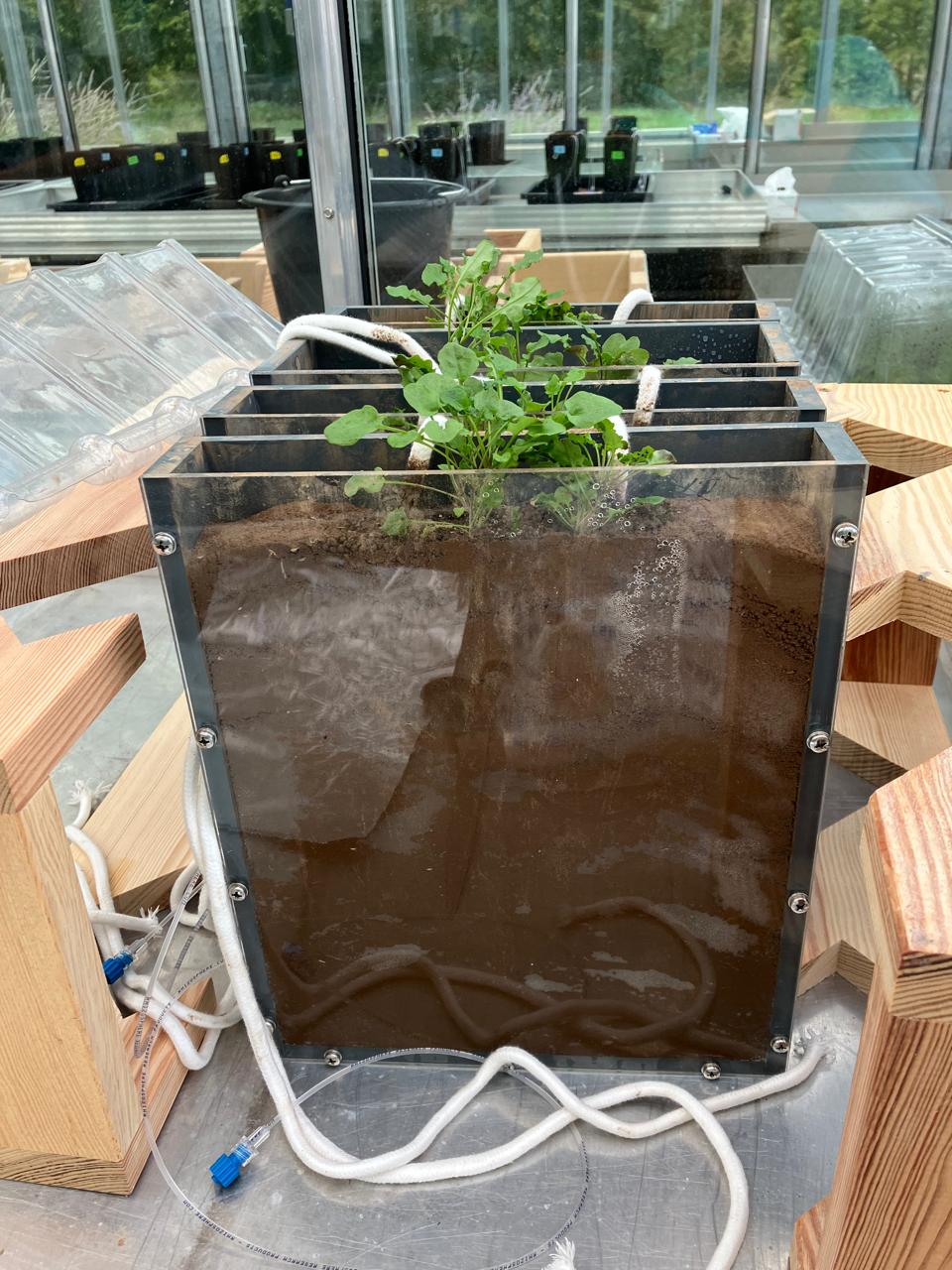
September 2023
A new experiment has started! In this study, we work with rhizoboxes to study processes in situ and with high-end resolution.

March 2023
I presented the project and some results from the first experiment to the department. This opened new collaborations for NUTCLIME.

January 2023
NUTCLIME joins the FACE (Fate and Management of Chemicals in the Environment) platform project.
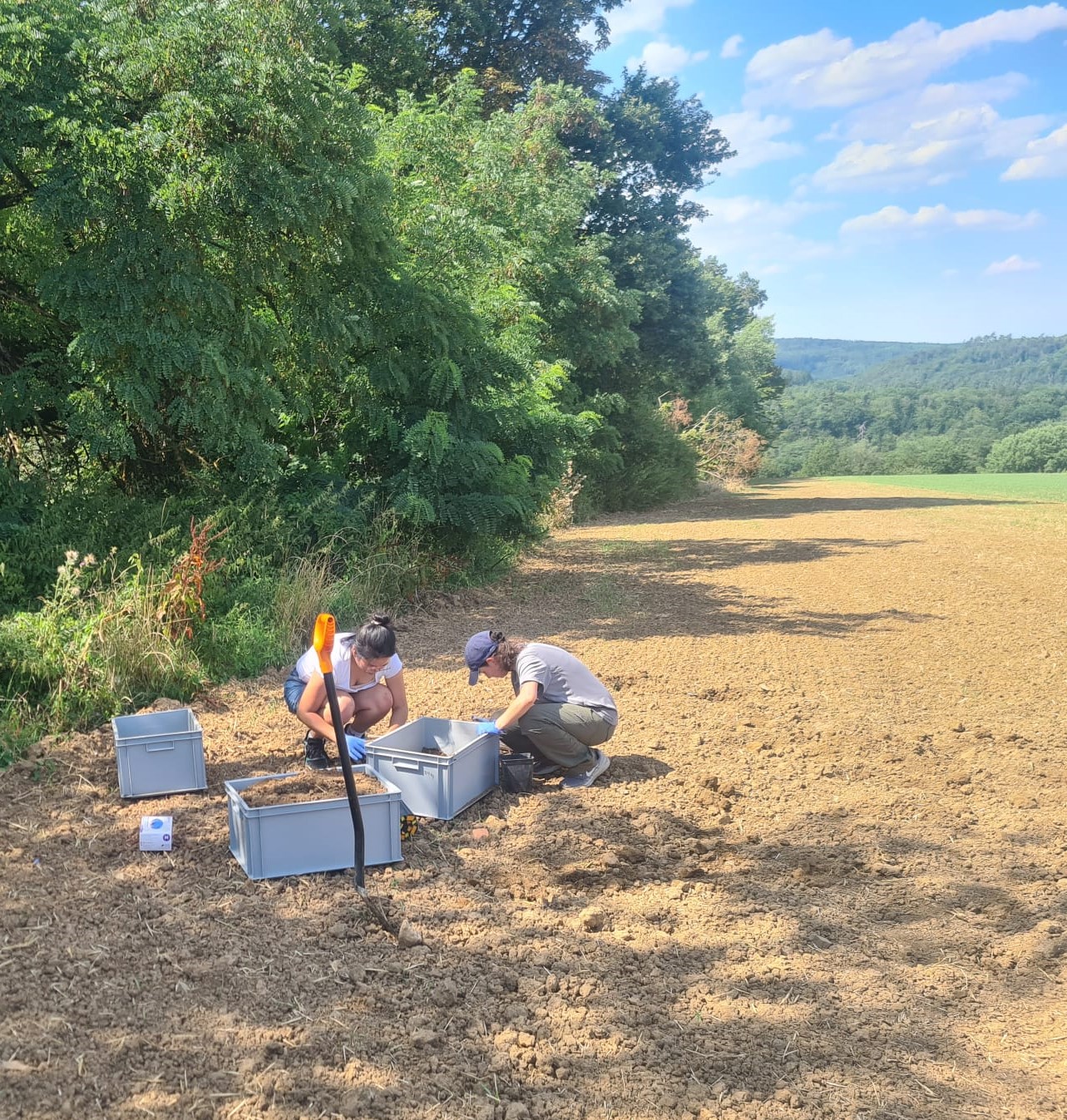
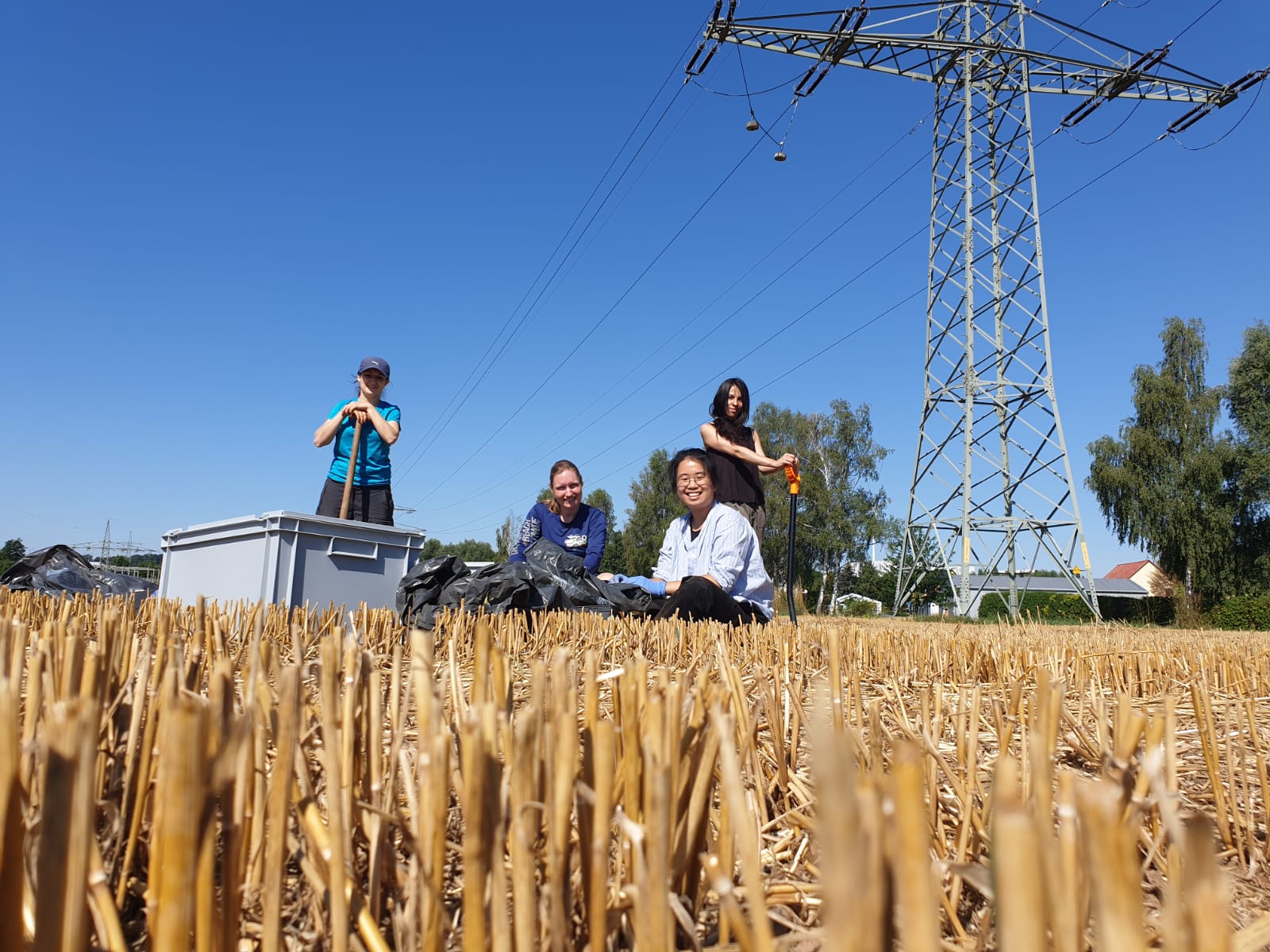
For mapping metals in 2D, we were at the Stanford Synchrotron Radiation Lightsource (SSRL) in Stanford, California, USA. We used X-ray absorption spectroscopy imaging.
Zymography is a technique for the in situ 2-D visualization and localization of potential enzyme activities in soil by fluorescence (methylumbelliferone (MUF) or 7-amino-4-methylcoumarin (AMC)) based on substrate conversion. It has a spatial resolution of up to tens of micrometers. It is mainly applied for hydrolytic enzymes (break down labile organic compounds) in soils.
Do you want to learn more about soil and get involved in its protection and citizen research? Then check the following links to other projects from the European Commission and the FAO.
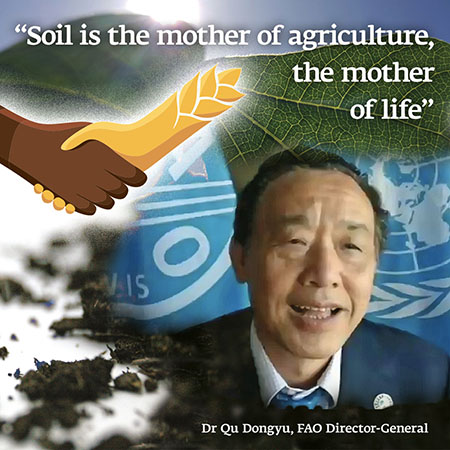
Global Soil Partnership (FAO)
And what is research without collaboration?
NUTCLIME has many great researchers as collaborators:
Prof. Dr. Wolfgang Wanek from the University of Vienna
Dr. Steffen Kümmel from the UFZ Leipzig
Dr. Stephanie Jurburg from the UFZ Leipzig
Prof. Dr. Kay Knöller from the UFZ Halle
Dr. Evgenia Blagodatskaya from the UFZ Halle
Dr. Ines Merbach from Bad Lauchstädt - UFZ and all the great team of technicians from this research station
Dr. Martin Herzberg from the UFZ Leipzig
Dr. Sharon Bone from SRRL, Stanford, CA, USA
Dr. Andrey Guber from Michigan State University, USA
Natalia Sanchez (PhD student) from our group
Maria Martin Roldan (PhD student) from the UFZ Halle
Jessica Hamm (master student) from our group
Paul G. Richter, our group's technician
Hendrik Seifert, our group's technician
Current and former intern students from our group


